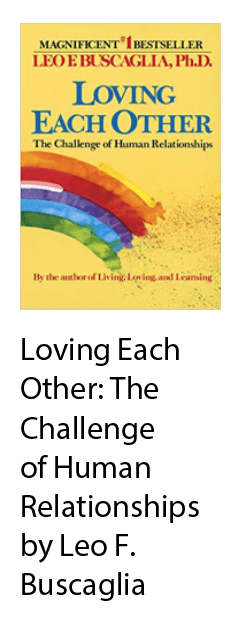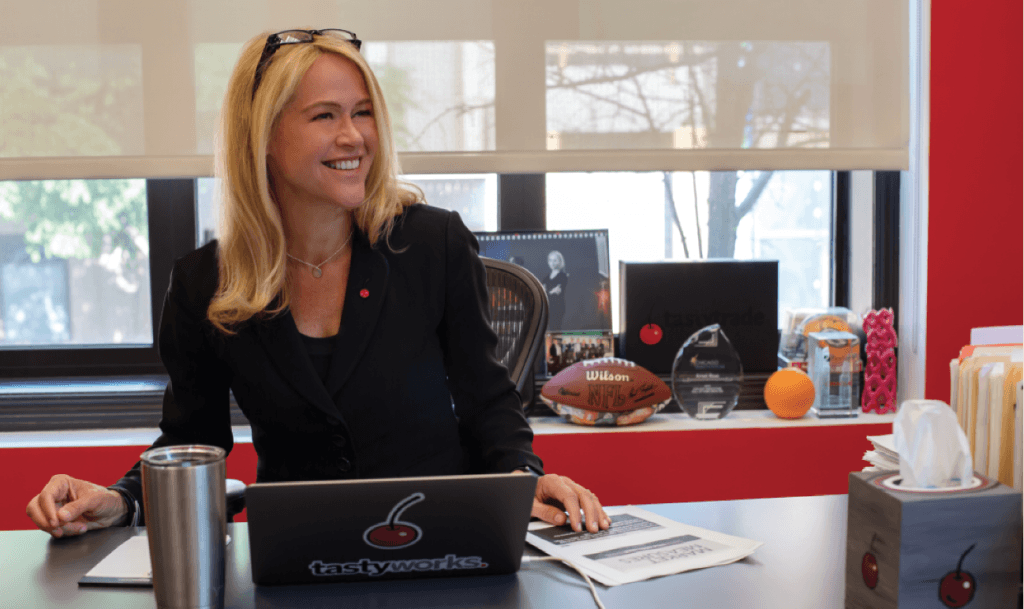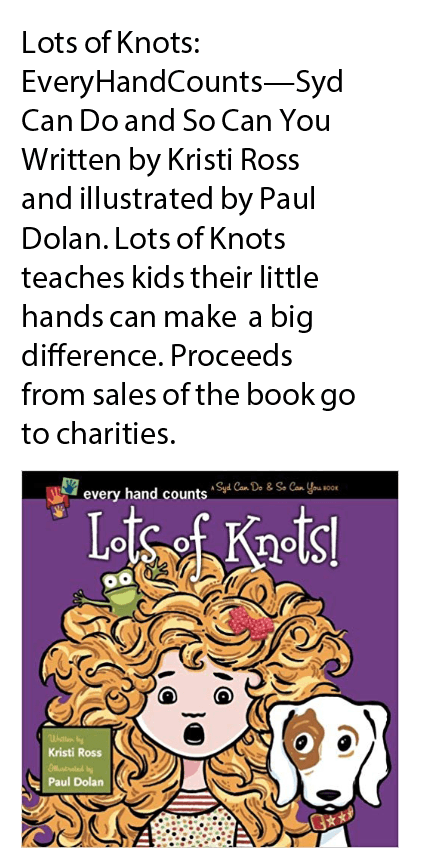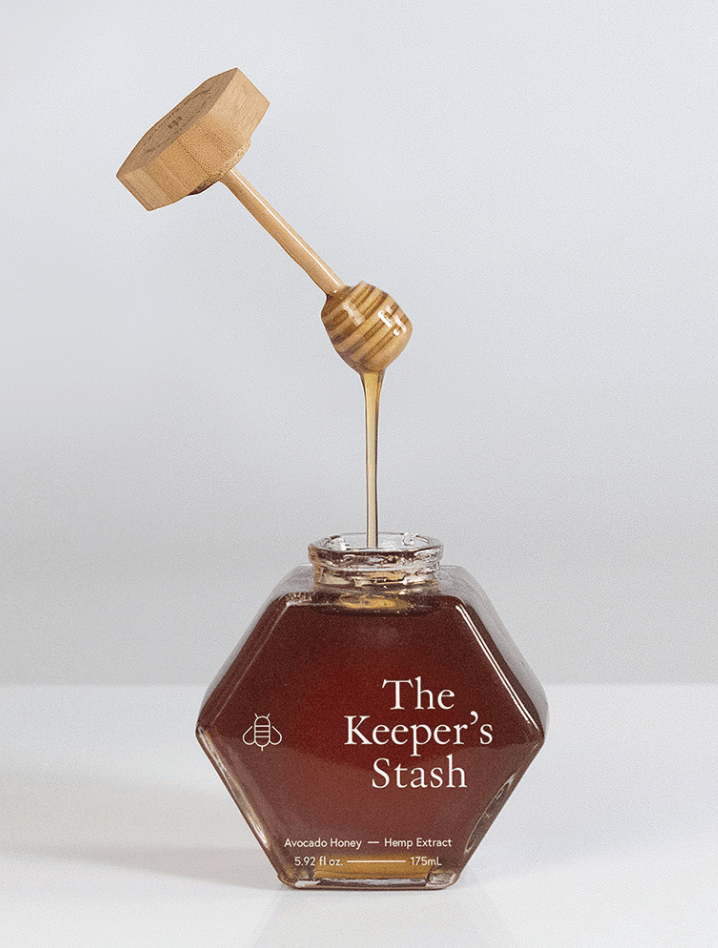Kristi Ross’ 5F’s Formula for a Productive & Purposeful Life
Seventy-two percent of entrepreneurs say they’re feeling anxious. To help those alpha-types cope, luckbox sought the advice of Kristi Ross, co-CEO and president of tastytrade, the Chicago-based financial media company that aids DIY investors.
Ross speaks with authority on the subject. She’s earned recognition in the business community, compiled a distinguished record of philanthropic service, and conducted more than 500 interviews with entrepreneurs and CEOs on her daily Bootstrapping in America show on the tastytrade network.
Combining her own extensive personal experience with what she’s learned from high-level executives and budding entrepreneurs, Ross has worked out a formal approach to balancing the most important aspects of a busy life.
She calls her formula the 5Fs
1. Fitness & food
Physical and mental fitness intertwine to foster wellness and enhance performance. The successful formula for running a marathon, for example, might be something like 90% mental effort and 10% physical effort.
Don’t underestimate the importance of that mental effort. Everything in life arises with our thoughts. For example, wake up expecting a bad day and that prophecy will almost certainly come true. Avoid that negative mindset and redirect distracting thoughts back to the positive side.
Of course, attitude alone doesn’t clear the way for success in life or in business. Entrepreneurs often fail repeatedly before they achieve their goals. That’s why they should summon every bit of drive and ambition they can muster to get back up and keep trying. Besides, the lessons from a bad day reveal how to improve the next day.
But it’s difficult to apply those positive mental attitudes unless they’re backed with physical fitness. A strong body supports a sharp mind and positive mindset. Train for that marathon, because conditioning builds the foundation needed to run that race.
In a race or in life, physicality requires carving out time for a workout routine. Think of it as forming a series of good habits. With enough repetition, good habits become mechanical. Do something every day for a month and it can become an unbreakable habit.
Still, the task of forming big, important habits can seem daunting. That’s why it helps to break big goals down into smaller doable pieces and accomplish something small but important every day. Commit to safety nets like never missing the daily workout two days in a row.
Reinforce commitment to a daily workout habit by measuring the progress that’s occurring. An Apple Watch, for example, tracks activity automatically, and users can then manually enter specific activities into the Lose It! app. It’s gratifying to see the improvement quantified. Celebrating daily wins can help, too.
Stick to a routine. Exercise at the same time every day. Start with just a few minutes of working out and build up to a longer routine. Reduce friction by laying out workout clothes the night before or placing running shoes in a spot where they’re a visual reminder to work out.
Once the habit of doing the same thing at the same time is formed, vary the workout before boredom can set in. Some like to change their personal fitness challenge every month to keep it fresh. It keeps them on track to know that there’s a new goal to reach each month, one day at a time.
There’s no denying the effort’s worth it. Studies indicate the benefits of working out don’t end with the obvious increases in strength and stamina. The evidence is in the numbers and the chemicals: exercise increases levels of dopamine, serotonin and endorphins. Those natural substances have positive effects on everyday performance. Health and fitness form the foundation for everything. So, that 90% mental aspect of running that marathon was just made a little easier by creating a strong physical base.
Exercise also results in deeper sleep, which means quicker muscle repair, clearer mental processing, better decision-making and overall good health. Quality of sleep matters as much as quantity. Whoop,
a wearable device designed to improve training, sleep and lifestyle choices, measures sleep efficiency and recovery in real time. It can feel like having a sleep coach. Researching the benefits of sleep, tracking one’s own sleep and making healthy adjustments can fine-tune one’s energy and focus.
Eating right complements working out, so put down the bag of Doritos and walk away. Ha! If it were that easy, everyone would be at the ideal weight. Instead, pack snacks for specific times of
Weighing in at the same time every day fosters accountability. Make it a habit.
Don’t give up everything that’s fattening, but eat calorie-laden foods in moderation. Settle for a bite of cake, or eat the burger without the bun. Small servings can satisfy the craving. If they don’t, just grab a glass of water and wait a few minutes before going back for more.
Measurement encourages better eating habits. Monitor weight, macronutrients and caloric intake with the Lose It! app.
2. Family, friends & fun
Making time for fun and laughter isn’t only healthy, it’s a great stress reliever. Some would say family time rivals working out and good nutrition as a pathway to good health. And few would deny that hanging out with the family or friends is more fun than spending time at the gym. In a busy world, the amount of time spent with friends and family isn’t always easy to control, but everyone has the power to improve the quality of that time. Make sure to set aside one-on-one-time for each child in the family, pursuing fun or philanthropy that fits their strengths and interests.

Don’t forget date night. But it doesn’t have to include dinner and a movie. It could be going for a bike ride or a run. Walk to dinner. Combining fitness-focused activities with time spent with a partner can make the date feel productive and fun. Combining a few of the 5Fs into the same activity can create stronger interwoven bonds and overall satisfaction levels.
Feeling connected to others by developing loving, deep-rooted relationships can bring happiness. Investing in close relationships, whether it’s with a spouse, friend, partner, kids, parents or siblings can even boost longevity, according to a
Harvard Study on Relationships
In 1938, scientists began tracking the health of 268 Harvard sophomores. With 80 years of data, the seminal Harvard Study of Adult Development ranks among the longest scientific looks at adult life. The authors of the study cited close relationships as the most prominent indicators of a long and happy life —rating them more important than financial achievement or professional recognition. Flourishing social and community engagement via family, friends
3. Finance
Management requires measurement, so it pays to know the numbers underlying personal finance. That can include the seemingly mundane but actually vital habit of keeping a formal budget, which can solve the mystery of where all that money went.
Track the inflows, outflows, metrics and measurements. What percentage goes for housing versus core necessities, travel and entertainment, charitable causes and pure wants? Are those good choices? Are the levels of spending appropriate in each category?
The budget shows precisely where the budgeter fell off the financial wagon and what needs to change to get back on. Without measurement, all that’s left is gut feel. Live by a personal budget even if it seems unnecessary or if there’s money to spare. Make it a goal to be able to recite where the money was spent and how it was spent.
Once a personal budget is established, it may be time to consider investing. Wading into the markets makes sense at any age or level of experience. Start small. Don’t risk everything. Learn risk-taking in bite-sized installments. Demystify the market by remembering that literally no one knows what the market will do. No one knows what any one stock will do. Too many factors affect a stock price and the overall market.
Next, it’s time to get more strategic with investing. Try spending 10 minutes a day building knowledge of trading—instead of devoting 40 minutes a day to Facebook, like the typical American. There are free user-friendly educational resources for traders at the Learn Center at tastytrade. Time spent trading can include learning terminology, becoming familiar with products and trying new strategies.
As with fitness, devote a little time each day or a few times a week to investing. Form good habits and follow a logical, mechanical approach. Spend time each day exploring new trades, checking current positions and deciding whether to close some out. It’s a daily exercise.
Stay small, so that a single position doesn’t ruin everything. Don’t expect homeruns but consistently hit singles. It takes discipline. Those who are highly competitive appreciate the daily challenge. It keeps one “fit” and attuned to the pulse of the market. Checking investments daily doesn’t consume much time at all.
If the concern is that there isn’t time to watch the markets all day, use options to trade strategically. Take some risk but leave some breathing room. A good example would be selling a wide strangle that has an 80% probability of profit. It’s a good go-to strategy that keeps an investor in the market, allows for some risk and return but doesn’t consume the whole day. Or try putting on a defined risk trade like an iron condor or covered call. The Learn Center at

Kristi Ross, co-CEO and president of tastytrade—an online financial network founded to make finance fun and actionable—became a chief financial officer at the age of 25 and started her own business at age 28. Since then, she’s helped mastermind more than 30 mergers, acquisitions, capital raises and company startups.
Yet she’s still found the time to raise three daughters, care for two dogs, compete with her equally Type-A husband, run three marathons, track her nutrition and fitness, give back to the community through philanthropic work, and earn an incredible array of honors.
In 2014, Ross, her co-CEO Tom Sosnoff and their team founded Dough, a visual front-end trading technology platform. A couple of years later, the team built out the back-end to create a customer-oriented brokerage firm.
They expanded their offering to help control the customer experience and deliver what self-directed investors need. The team shelved the name Dough for later use and rebranded. They also brought in veteran trader and serial entrepreneur Scott Sheridan to register and help run the new venture. The result was an online brokerage firm called tastyworks. It was launched in January 2017, and Ross serves as chairman of the board. The tastytrade and tastyworks combination collectively help do-it-yourself investors engage with their finances.
Now, the team is resurrecting the name Dough to fulfill a similar mission for beginner investors. They brought in Victor Jones to lead Dough and bring a fresh perspective on finance and risk-taking.Dough will use the latest trading technology and actionable content to help customers new to the markets. The new Dough team is delivering all of that to mobile phones.
As part of that collective mission, Ross co-hosts the daily show Bootstrapping in America on the tastytrade online streaming network, where she interviews entrepreneurs, the ultimate DIY’ers, who share their startup experiences.
Before that, Ross served as CFO of thinkorswim Group, as a private company that TD Ameritrade later bought for $750 million in 2009. Before thinkorswim, she worked as CFO of Automated Trading Desk Specialists, a stock specialist firm on the Chicago Stock Exchange.
Ross has served on the boards of companies engaged in banking, trading, technology, restaurants, media, exchanges, SAAS technology and fintech. She’s performed philanthropic work with ChicagoNEXT Fintech Council; P33 Technology Initiative; Chicago’s Innovation Hub CEC/1871 and the Midtown Educational Foundation.

4. Philanthropy
Beyond family and friends, take the time to give back to the community in a way that’s personally meaningful. That way, volunteering or contributing funds feels good and can become a habit. But sticking to a routine still takes a conscious effort, so set aside time for charitable work weekly or monthly.
In one example, a family without a dog could make a weekly pilgrimage to an animal shelter to walk some of the canines. That way, the kids connect with animals, and the dogs get the attention they crave and the exercise they need, while the shelter benefits from help with the chores. Keeping the trips consistent also teaches children responsibility. All of this can happen without the danger of a child losing interest in daily pet-related chores and leaving a parent to take up the slack.
In an example of a monthly philanthropic chore, family members could work together when they volunteer for organizations like those that provide homeless shelters with blankets. Folding, storing and transporting the blankets teaches children to get up early, take on responsibility and organize their activities.

Community engagement and philanthropy, along with developing close relationships with family and friends, has been cited by a prominent Harvard University study as a critical determinant of personal health and happiness.
Other types of philanthropy occur just once. Take two examples from this writer’s life. My young daughter cut her long hair to support a charity, inspiring me to write a book to share the experience with others. It’s called Lots of Knots. In another example, I teamed up with my sister and my niece for a two-day walk to raise funds to combat breast cancer. At the time of the
5. Focus
Either consciously or unwittingly, every person occupies the driver’s seat of his or her life. Each has the power to choose life’s focus—the purpose they set out to accomplish. Entrepreneurs often define their focus as their company’s mission. It’s part of who they are, what they believe and what stirs their passion.
Many embrace life-long learning and insist upon enjoying the journey. Most people want to spend their days doing what they love and loving what they do. That way it doesn’t feel like work. Learn from the hard-earned wisdom of others. Apps like Blinkist (blinkist.com) serve up the key ideas from the world’s greatest books on motivation, business and productivity in both text and audio formats.
It’s not easy, but everyone can lead a balanced, happy, meaningful life, even if they spend the preponderance of their hours at work. It’s about doing what feeds their passion, consciously creating joy and banishing anxiety. It’s about building a strong foundation by staying healthy in body and in mindset. It’s about learning something new every day and embracing challenges. It’s about putting fears aside, seizing opportunities and taking risks.
My motto: Opportunity is all around—in investing, in business and in life. Grab it!
Kristi’s Fitness & Food Resources
30 Ways to Reboot Your Body: A Complete User Manual for Getting the Most Out of the Human Body
By Ben Greenfield
Kindle format: $2.99
The Whoop strap fits around the wrist and measures heart rate 24/7, calibrating a baseline, making training recommendations, and monitoring recovery, strain
FACTOR75 delivers chef-prepared, high-protein meals to subscribers’ front doors. factor75.com
8fit
Lose It! app users receive a personal daily calorie budget and weight-loss plan, food and exercise tracking, connection with other trackers and apps, and access to a community for inspiration—premium version costs $3.33 monthly. loseit.com








